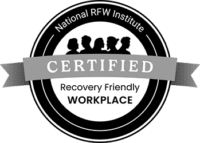5 Strategies for Providing Effective Patient Education
Patients can most effectively manage their specific conditions and overall health if they’re given the tools, education, and resources to be informed advocates in their own care. Over the past few years, corresponding with the increased emphasis on wellness and the rise of telehealth integration for personalized care, patient education has become more important. As the emphasis on patient collaboration and partnership has increased, so have the strategies for providing effective patient education. These strategies have proven to be successful in increasing levels of patient activation and involvement, while also helping them to learn more about how to manage and perhaps eventually overcome their condition.
Leveraging Technology in Delivery of Materials
There are more ways than ever to deliver educational resources to patients, particularly within the text-messaging and smartphone paradigm. Care providers can improve patient education and ensure that patients always have access to a library of resources through email and text messaging. Electronic delivery of materials via a secured link to a portal can also cut down on paperwork and ensure that your patients always have access to educational materials at the push of a button. You can customize these tech deliverables, categorizing them by condition, age, gender, and other variables. You can also take advantage of systems already in place, rather than building your own.
Talk to Patients in their Own Languages
Language barriers have proven to be one of the largest impediments to successful doctor-patient communication. Data from the United States Census indicates that over 67 million residents of the United States speak a primary language other than English. In addition to provide in-office translation services and other accommodations for the ever-growing non-English speaking patients, providers can further strengthen engagement among this population by offering educational materials in their own languages. A one-time investment in translation services can greatly improve patients’ experience and empower them in their ongoing care journey. It will also help them to feel valued and respected by their care providers.
Involve Family Members or Loved Ones in Patient Care
Involving loved ones in your patients’ treatment and education provides an extra set of eyes and ears to digest important information. It also provides another accountability mechanism to ensure that patients are taking the necessary steps to enrich their own independent learning. This is especially true with regard to elderly or cognitively impaired patients who may have trouble retaining or comprehending important information.

Consider the Whole Patient
An increasingly large emphasis has been placed on treating the “whole patient” based on the idea that they have their own unique set of care needs and lifestyle circumstances. The same level of uniqueness applies to how they learn and their physical and cognitive limitations. A patient with eye issues may have a difficult time reading tiny print off of a smartphone, whereas a patient with a learning disability may need a more visual and graphic-based set of materials. Providers should strive to address each patient’s specific cognitive and sensory issues in the dispensation of education materials.
Engage Your Patients on Their Level
Talk WITH your patients, not AT them. There’s something to be said for “desk-side manner” when you’re trying to educate different types of patients. Two of the primary ways to facilitate meaningful dialogue is by trying to simplify terms, rather than confuse them with jargon or clinician-level vocabulary, and also distilling the management of their condition down to a rewards-based situation. In other words, try to help them understand the pay-off of proper condition management and let them know the fastest and easiest way to get there. Refrain from using judgmental tones or sarcasm, as this may close them off to learning and jeopardize their level of comfort and trust.
Helping You Bring All the Elements of Patient Education Together
GoMo Health has been helping care providers all over the continent improve patient education for years, whether it’s in the oncology space, maternal and child health, behavioral health or any other specialty. Our digital therapeutics provide patients with valuable insights on how to maximize their care while effectively coping with the immediate clinical and ongoing lifestyle issues associated with their condition. GoMo Health leverages mobile technology to expedite and simplify the patient education process.
Schedule a Consult
Learn how GoMo Health can help you improve patient education, thereby reducing readmissions and improving health outcomes.







Find Us Online